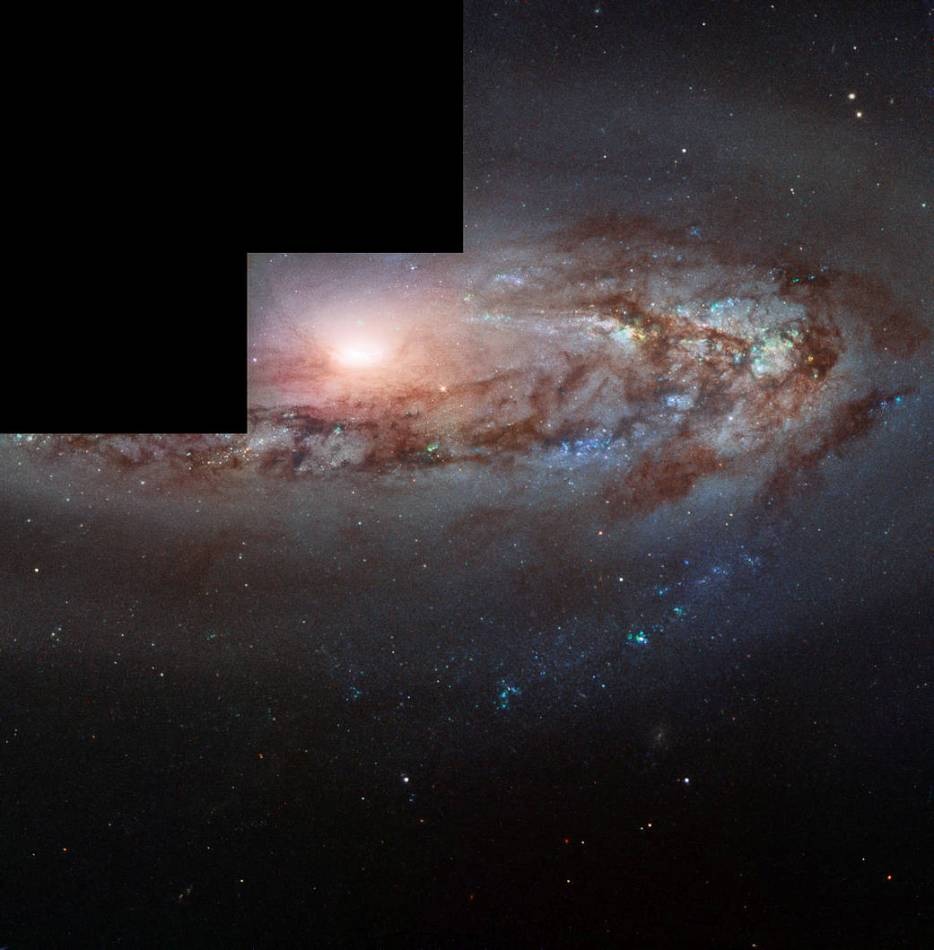May 27 2019
Messier 90, a splendid spiral galaxy located approximately 60 million light-years from the Milky Way galaxy in the constellation of Virgo (the Virgin), is part of the Virgo Cluster, a collection of more than 1200 galaxies.
 Image credit: ESA/Hubble and NASA, W. Sargent et al.
Image credit: ESA/Hubble and NASA, W. Sargent et al.
The image of Messier 90 combines ultraviolet, infrared, and visible light collected by the Wide Field and Planetary Camera 2 on the NASA/ESA Hubble Space Telescope. This camera was functional from 1994 to 2010, capturing images with a strange staircase-like shape. This is due to the fact that the camera was developed using four light detectors with overlapping fields of view, one of which brought about a higher magnification compared to the other three. Combining the four images together in one picture necessitates the high-magnification image to be reduced in size for it to be aligned properly. This generates an image with a layout that resembles steps.
Messier 90 is exceptional; it is one of the very few galaxies observed to be traveling toward the Milky Way, but not away from it. The light from the galaxy shows this incoming motion in a phenomenon called blueshift. Simply put, as the galaxy moves toward the Earth, it is compressing the wavelength of its light, quite similar to a slinky that is squashed when pushed on one end. This leads to an increase in the frequency of light, shifting it toward the blue end of the spectrum.
With the expansion of the universe, nearly all of the galaxies that we see in it are moving away from the Earth, and hence their light is observed to be more toward the red end of the spectrum, called the redshift. However, Messier 90 seems to be a rare exception.
Astronomers consider that this blueshift is possibly brought about by the colossal mass of the cluster that accelerates its constituents to high velocities on weird and unusual orbits, sending them whirling around on odd paths taking them both toward and away from Earth over time. The cluster itself is moving away from the Earth, and a few of its constituent galaxies, like Messier 90, are moving faster compared to the cluster as a whole, rendering it such that, from Earth, the galaxy is observed to be heading toward the Earth. But a few are also moving in the opposite direction inside the cluster, and thus appear to be flashing away from the Earth at a very high velocity.
Messier 90 features in Hubble’s Messier catalog, includes some of the most stunning objects that can be viewed from Earth’s Northern Hemisphere.